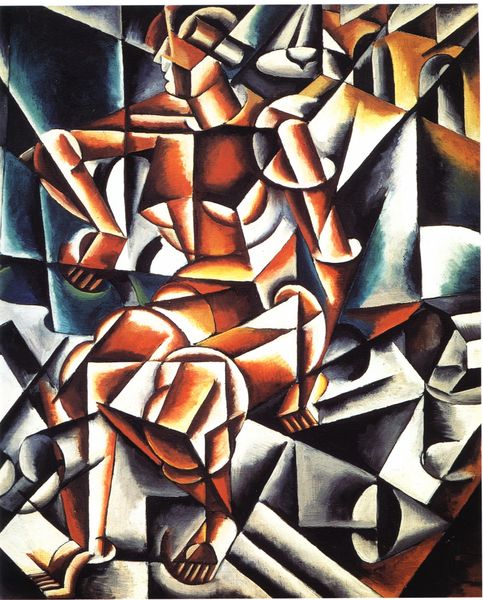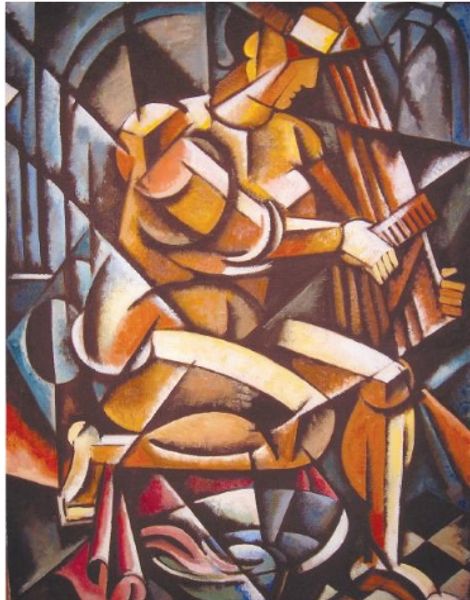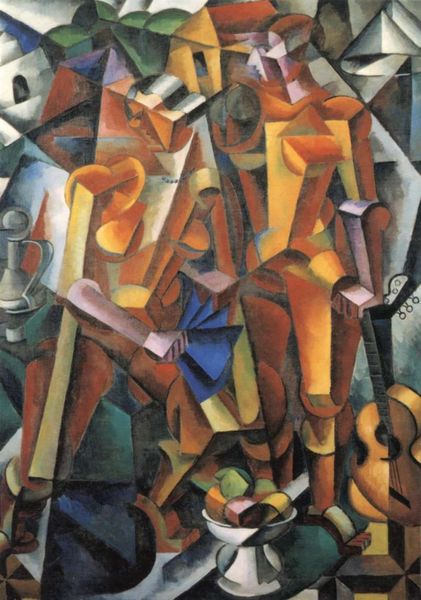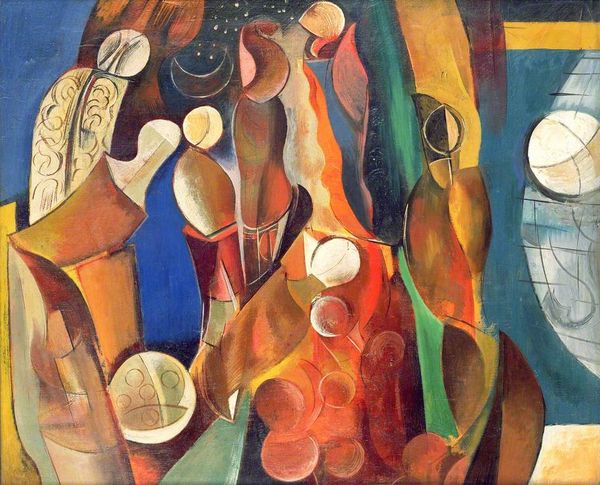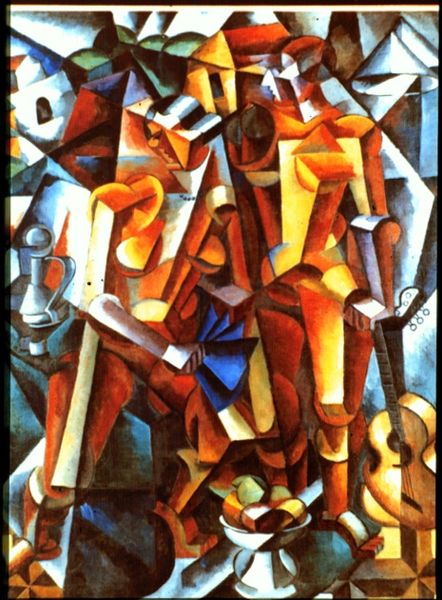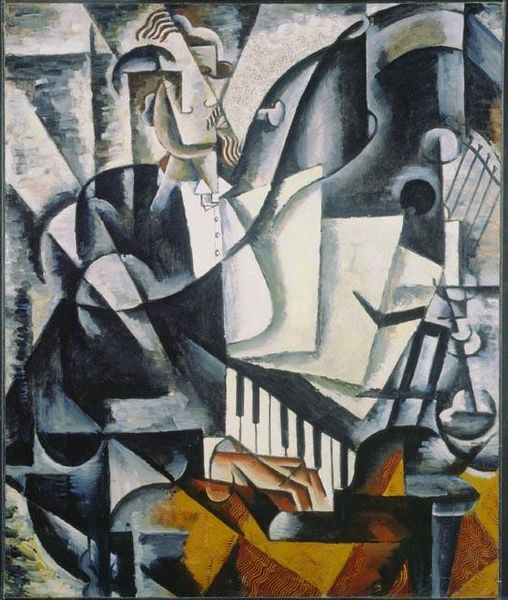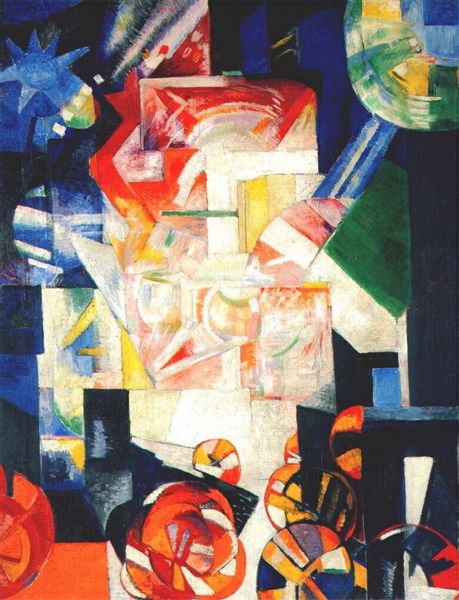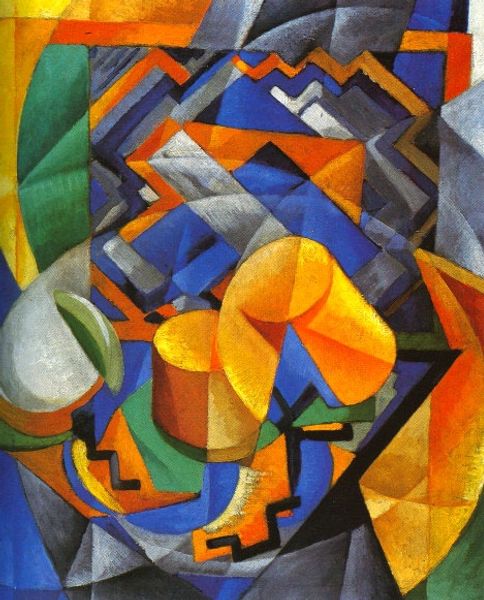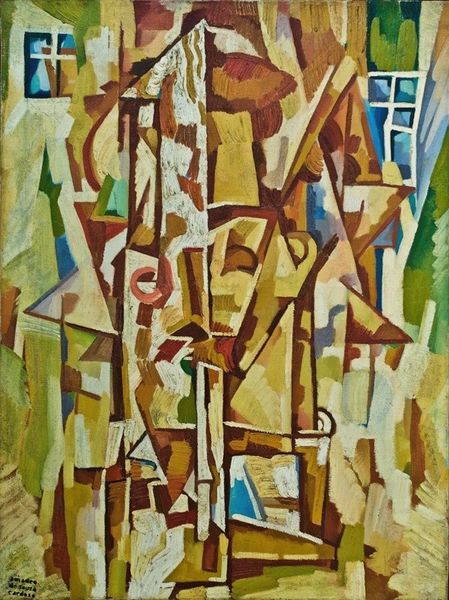
acrylic-paint
#
portrait
#
cubism
#
abstract painting
#
constructivism
#
acrylic-paint
#
figuration
#
acrylic on canvas
#
geometric
#
paint stroke
#
modernism
Dimensions: 99 x 93 cm
Copyright: Public domain
Editor: Here we have Lyubov Popova's "Seated Figure," rendered in what looks like acrylic paint. It's a very angular piece. I'm immediately struck by how the figure seems both present and fragmented, a sort of dismantling of the female form. What's your take? Curator: That's a great starting point. Considering Popova's involvement with the Russian avant-garde and Constructivism, it's essential to view this through a lens of revolutionary change. This isn't just a "seated figure," it’s a deliberate breaking down of traditional representation, a dismantling of bourgeois ideals. Editor: So, it's a political statement? Curator: Absolutely. Think about the time. Post-revolution Russia was grappling with redefining societal structures. Popova and other artists sought a visual language that mirrored that radical shift. The geometric forms aren’t merely aesthetic; they challenge established notions of beauty, femininity, and even the individual’s place in the new collective. The simplification of the human form echoes the industrialized, mass-produced reality that was being built. Consider also that the sitter here lacks classical feminine characteristics and is surrounded by functional forms – this asserts a new social role for women as builders of the modern world. What do you notice about the colour choices? Editor: The restricted palette creates an intense, almost architectural feel. The warmth of the figure against the cooler blues almost gives the piece a sense of dynamism. Curator: Precisely. It is worth considering whether there are echos of a critique of cubism at play. Think about how gender and class were negotiated in Western Cubism. Are there signs that Popova offers a counterpoint from a socialist-feminist view? This is why it is not just a study in geometric abstraction but rather a bold pronouncement on the future, on a new gendered identity emerging from revolutionary ideology. Editor: It gives me a lot to consider, and has transformed my understanding from an abstract female form into an active figure, breaking boundaries in new Russia. Curator: Agreed, seeing the political and cultural impetus can change one's entire perspective on the piece.
Comments
No comments
Be the first to comment and join the conversation on the ultimate creative platform.
